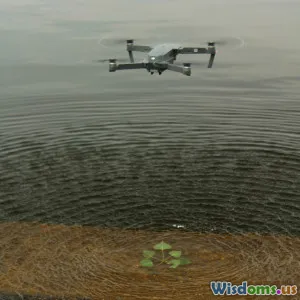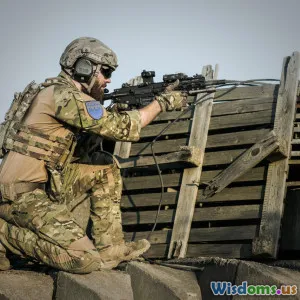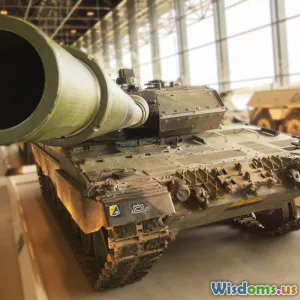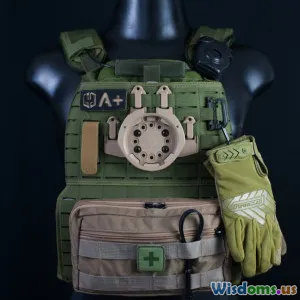
Five Myths About Military Robotics Debunked
11 min read Uncover the truth behind common misconceptions about military robotics and their use in modern defense systems. (0 Reviews)
Five Myths About Military Robotics Debunked
Military robotics conjure images of implacable android soldiers or faceless drones patrolling the skies. Fueled by Hollywood blockbusters and sensational headlines, public perception often veers toward the fantastic. But as military robots become integral to modern defense strategies worldwide, understanding their reality is crucial for informed public debate, ethical considerations, and responsible policy.
Below, we break down five of the most persistent myths about military robotics, challenging popular fiction and highlighting the facts, technologies, and futures shaping this critical field.
Military Robots Are Primarily"Killer Robots"
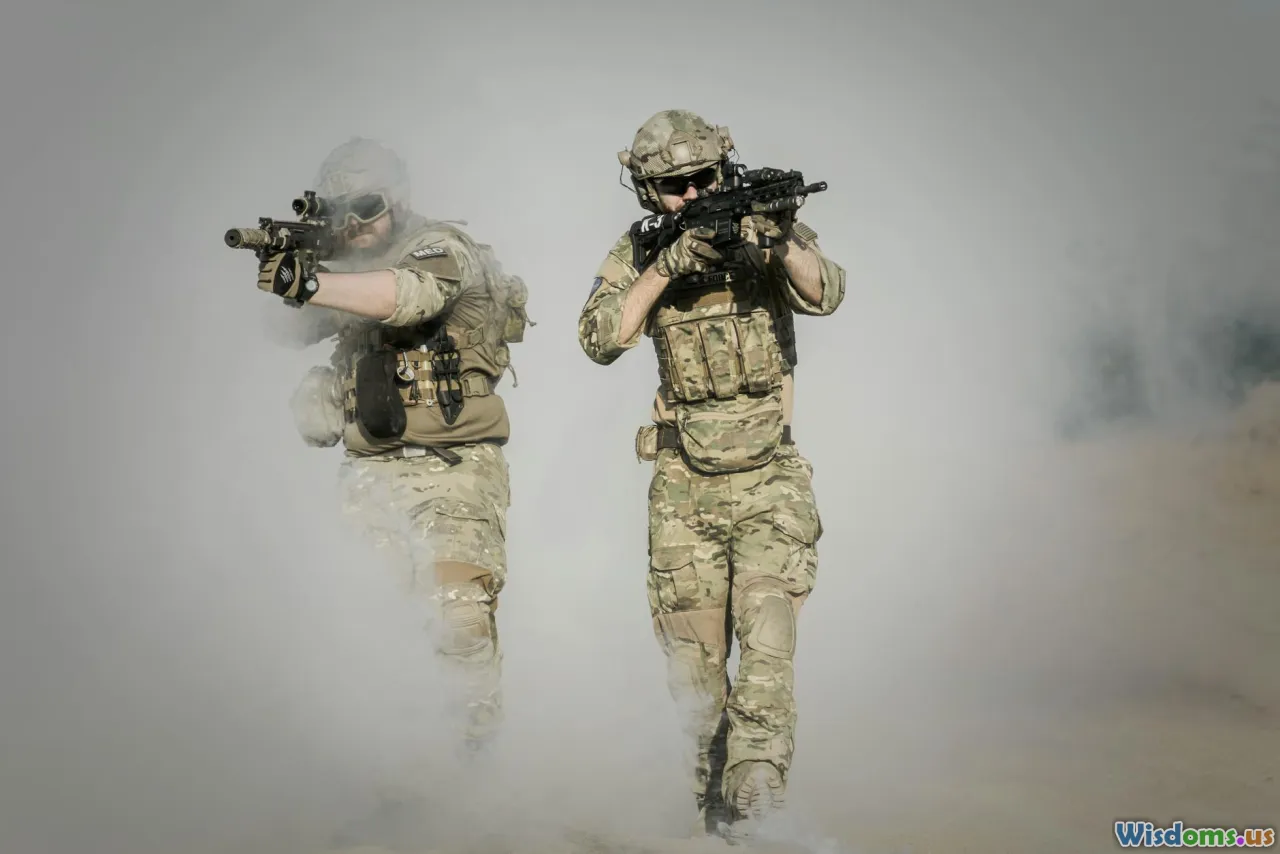
The phrase "killer robots" has become a media shorthand for all military robotics, evoking amorphous fears of out-of-control machines autonomously deciding life and death. However, the overwhelming majority of military robotics are designed not for lethal missions but for support, logistics, and lifesaving tasks.
Unmanned Systems for Dangerous Tasks
U.S. and allied militaries, for example, have deployed thousands of robots not to attack, but to protect human lives. The PackBot and TALON robots, both widely fielded in Iraq and Afghanistan, offer a glimpse into this reality. These robots trundle ahead of soldiers to disarm roadside bombs, clear hazardous mines, and investigate threats—tasks that would otherwise put human lives at immense risk. As of 2020, iRobot's PackBot alone had logged over 20 million operational hours in military and civilian roles.
Navy „Sea Bots“ such as the Knifefish are deployed to scan for underwater mines, reducing the peril to divers. In humanitarian operations, militaries deploy robots to distribute food in hazardous zones, assess structural safety after disasters, or even map COVID-19 viral load in field hospitals via UV-disinfection robots.
Weaponization Is Carefully Governed
Notably, processes to weaponize military robots undergo intense checks including legal, ethical, and operational oversight. The vast majority of deployed robots do not carry weapons at all – their true mission is keeping troops and civilians safer.
Robots Act Entirely Autonomously in Combat

One persistent myth suggests military robots, once switched on, make their own decisions independently and infallibly. In truth, almost all current military robotic systems—especially those used in combat—are either remoted-controlled (teleoperated) or operate under strict human supervision.
Human-in-the-Loop
For weaponized drones such as the MQ-9 Reaper, human pilots and sensor operators remotely control all operational decisions, including navigation, target identification, and weapon release. In fact, dozens of highly trained professionals may oversee just a handful of drones. Even automated defense systems, such as Israel’s Iron Dome, rely on human confirmation before certain engagement decisions.
Levels of Autonomy Explained
Robotic autonomy exists on a spectrum—from direct teleoperation through to supervised autonomy. Unmanned Ground Vehicles (UGVs) might navigate a pre-set path using GPS and obstacle detection, but any deviation, threat, or weapons release triggers pause-and-wait routines, pending operator approval. This is termed "human-in-the-loop" control.
The U.S. Department of Defense's policy explicitly prohibits the autonomous engagement of targets by lethal systems, mandating significant human judgment for all use-of-force decisions—a fact often lost in public debate.
AI in Military Robotics is as Capable as Human Soldiers

Popular sci-fi and viral clips often assume that machine learning-powered military robots today are as perceptive, judgmental, and adaptive as their human counterparts. Nothing could be further from reality.
Precision—and Its Limitations
AI is increasingly adept at pattern recognition tasks, such as flagging suspicious objects or classifying vehicles in high-resolution images. Deep learning tools like convolutional neural networks have enabled marked leaps in surveillance and reconnaissance effectiveness.
However, today's military AI cannot rival a human's intuition, empathy, or situational awareness, especially on the fluid, ambiguous battlefield. Recognizing the difference between an armed combatant, a non-combatant, or a surrendering fighter is a complicated task even for trained soldiers—let alone an AI, which is still challenged by unpredictable environments, deprivation of conventional signals, and adversary deception efforts.
Examples of Real-World Performance
During Russia’s war in Ukraine, commercially available quadcopters augmented with AI offered real-time mapping and simple object tracking, but they routinely required human verification amid smoke, camouflage nets, and deliberate misinformation. In urban combat or complex terrain, the role of human discernment remains paramount.
Military Robots Replace Human Soldiers En Masse

A common misperception is that rising investments in robotics and AI are signals that human soldiers will soon be displaced. Yet worldwide, defense analysts agree: robotics augment, rather than replace, human warfighters.
Collaborative Teams—and Their Benefits
Most military concepts envision robots teaming up with humans in collaborative roles. Examples include manned-unmanned teaming (MUM-T), demonstrated by the U.S. Army’s experiments with robotic wingmen that scout ahead of armored vehicles, relaying information and drawing enemy fire away from crews.
Australian Army’s Ghost Robotics Q-UGVs serve as sentry dogs or hazard scouts, integrating with traditional infantry patrols for perimeter security or hazardous reconnaissance.
Enhancing Human Strengths, Not Substitution
Robots can carry heavy loads, fight fatigue, perform non-stop surveillance, or gather intelligence in denied environments such as radioactive or chemically hazardous sites. But creative problem solving, diplomacy, negotiation, and the ability to improvise under stress are strengths unique to humans. Even as ignition points for future conflicts become more technologically complex, the irreplaceable qualities of human personnel persist.
Autonomous Military Robots Cannot Be Hacked or Fooled

Fictional portrayals frequently depict military bots as invincible or impervious to hacking; the reality is far more nuanced and, in some ways, risk-laden.
Digital Vulnerability Is Real
All contemporary military robotics operate via complex networks, relying on wireless communications, GPS, cameras, and other sensors. These in turn generate attack surfaces vulnerable to electronic warfare and cyber-intrusion.
A famous real-world example: in 2011, Iranian forces reportedly hijacked a U.S. RQ-170 Sentinel surveillance drone by programmatically spoofing GPS coordinates, steering it to a controlled landing. Similarly, consumer-grade drones in Ukraine have been routinely downed or captured with jamming and GPS spoofing tools. This demonstrates that autonomous platforms can be deceived by electronic trickery—sometimes catastrophically.
Defenses and Precautions
To counter cyber threats, militaries introduce robust encryption, frequency hopping, continuous code audits, and air-gapping sensitive robotic systems from the public internet. Lessons learned from satellite and aerial drone operations over the past decade have cascaded into all modern robotic designs. Rigorous testing, adversarial simulation ("red teaming"), and standard operating procedures for force commanders aim to ensure resilience, but the race between offense and defense never ends.
The Road Ahead: Shaping Perceptions With Facts

Misconceptions about military robotics can result in misplaced fear or, conversely, dangerous overconfidence in these technologies. The truth is more balanced, and understanding the facts is essential as militaries, technologists, and policymakers negotiate the ethical framework and operational boundaries of robotic systems in conflict planning.
Informed Debate Shapes Better Policy
Ethical controversies—such as "lethal autonomous weapon systems"—deserve public scrutiny, but such debates are best served by examined realities. Military robotics save lives every day, assist disaster zones, repair and fuel vital infrastructure, and uncompromisingly rely on human supervision and sensing.
Looking Beyond the Headlines
As advances accelerate, it is paramount to recognize both the limitations and advantages robotics offer. The future of military robotics is unlikely to be defined by Terminator-like androids but by quietly transformative systems embedded within human-machine teams, focused on safety, precision, and resilience.
By cutting through the myths, we can foster conversations that drive responsible innovation, accountable governance, and a safer world for all.
Rate the Post
User Reviews
Popular Posts










